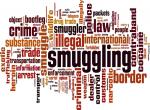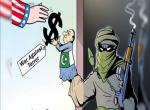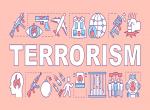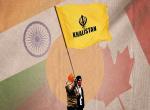The toxic nexus of narco-terrorism in Jammu and Kashmir intersecting the conflict economy is emerging as a significant threat to global security. This fuels violence, instability, and corruption and steers back the efforts promoting peace, prosperity, and economic growth. The Narco terrorism has different motivations and agendas. Their only aim is monetary gain and work without interference from the regulatory or law enforcement bodies.
Narco Trade Differs from Terrorism
Terrorism: The motivation is to create Political Violence, actively challenge the state, and control and reform societal structures. Where the key players are various organizations, insurgent groups, and organized crime syndicates, their strategies are only connected with the result. With this as an understanding of their end goal of violence, the government agencies can have insights into the kind of people they like to recruit.
Narco Trade: Fuels money through various hawala accounts creates an underground economy with untaxed transactions and is a home of illegally earned money. This is the funding mechanism for arms smuggling, narcotics trafficking, and illicit financial flows.
Terrorist organizations find it easy to engage in narcotics-related activities to fund their operations and get closer to their end goal of violence and terror. In this article, the author will focus on the modus operandi and drug-trafficking nexus in Jammu and Kashmir.
Intersection of Conflict Economy with the Nexus
In simple words, the sole aim of this nexus is to pump in terror and pull out revenue. The single agency ISI has various terrorist organizations and their commanders with a single aim but different names and locations. They have terrorists and Over-Ground Workers (OGWs) working for them. This agency of ISI has its business generating models of drug trafficking. They have deputed Drug Mafia and a big expanded network involved in various activities. The activities of these people are adverse notice of law enforcement and intelligence agencies as they are thickly involved in activities prejudicial to the national well-being. This money powers up the conflict economy. The Drug Mafias are organized in their operations with Drug Lords and heads of the controlling agencies and they operate along with distribution cells of drugs. Narcotics in India is an established threat that needs a complete strategic approach to nip it down.
Why is this important in India?
The Growth story of India has left its rivals in awe. A vast population, innovations, and entrepreneurship drive this growth story. Rivalries are taking note of this. Terrorist groups rapidly adapt and evolve their strategies. Insurgent groups transition to narcotics trafficking, blurring the lines between crime and terrorism. After Punjab, Jammu, and Kashmir region's vulnerability to drug trafficking has alarming consequences for India’s economy and security. The strategic location makes it a key transit point for drugs from Afghanistan and Pakistan.
The traditional routes of smuggling in Jammu and Kashmir
- Kupwara Tangdhar & Keran Sectors
- Baramulla Kamalkot, Jabra, Hatlanga, Dulanja
- Poonch Tattapani, Abbaspur
- Jammu along Chenab River
- Samba Pangdour, Gaghwal
These routes are similar to the infiltration routes used in arms smuggling. Smuggling paths are assisted by locals seeking quick profits. The involvement of local communities in facilitating smuggling routes is often motivated by financial interests. The end destination is the cities of India like Delhi and Mumbai where they are sold at Rs 10,000- 15,000 per gm. The origin of the smuggling of narcotics begins from Afghanistan or Pakistan at Rs1,000 per gm.
Drug trafficking is on the increase in Jammu and Kashmir and the facts reveal one addict walks into Srinagar OPD after every 12 mins. The number of patients has increased significantly to 41,110 from 23,403 from March 2021 to March 2023. According to the Institute of Mental Health and Neuro Sciences, Reports reveal 90% of drug users are in the age group of 17 to 30. The number of new patients was 2123 and the number of follow-up cases was 21,280 in 2021-2022. Where these numbers increased to 3036 as new patients and 38, 074 as follow-up cases in 2022-2023. A clear-cut jump of 75 % in the OPD patients. This gives many 5 patients walking to DDC Srinagar every hour and 114 people daily.
Kupwara is a major concern of a strong smuggling nexus through porous borders. Keran and Tangdhar are the entry points.
- As per the reports, total narcotics seized in the last five years -
- Charas - 64.098 kg
- Brown Sugar - 162.855 kg
- Heroin - 99.515 kg
- Codeine - 547 bottles
- Fuki - 400 gm
- Cannabis - 90 gm
- Ganja - 600 gm
The intersection of conflict economy and narco-terrorism perpetuates violence, destabilizing regions and threatening global region and threatening global security.
Dual Threats of Drug Trafficking and Terrorism
When a crime is organized it becomes a vicious venom. Both drug trafficking and terrorism are so intertwined and support each other that it is almost impossible to separate them. This criminal empire poses a serious threat to national security and the evolving conflict economy is emerging as a major hazard to the law enforcement apparatus of the nation. The duality in threat management calls for a strong and specific approach to dismantle the chief architect and cartel backbone. It is difficult to say who the bigger enemy is. Terror and terrorism dominate the global headlines, but the insidious enemy lurks in the shadow. The unseen forces of hawala accounts and illicit money circulated through them propel terror activities.
This necessitates a revaluation of current strategies at a government level. The alarming rise in scrutiny of financial networks signals the future concerns of conflict economy which can be a looming threat for India. According to some reports, violence costs $17.5 trillion, and the cost of terrorism contributes to the reduction in economic activity measured by GDP attributable to the conflict. India should have a way forward in cooperation with several economic think tanks along with the military to mitigate the terror and economic risk before it is too late.
(The paper is the author’s individual scholastic articulation. The author certifies that the article/paper is original in content, unpublished and it has not been submitted for publication/web upload elsewhere, and that the facts and figures quoted are duly referenced, as needed, and are believed to be correct). (The paper does not necessarily represent the organisational stance... More >>
Image Source: https://defenseopinion.com/wp-content/uploads/2023/11/bigstock-184970974-1.jpg











Post new comment